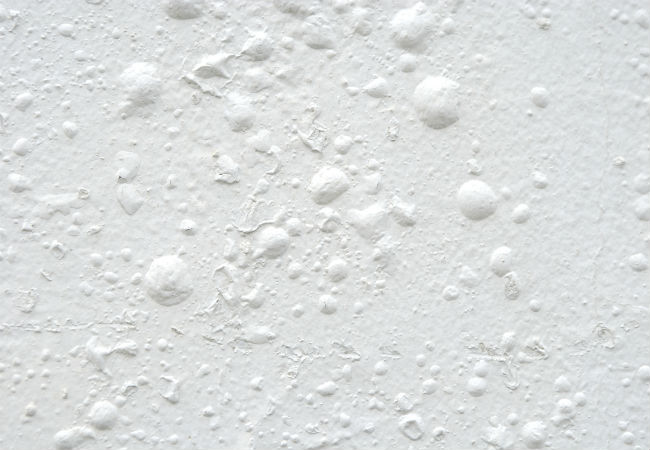We may earn revenue from the products available on this page and participate in affiliate programs. Learn More ›
Paint bubbling on walls is an unattractive, oftentimes surprising outcome that many DIY painters face after completing a paint job. But what causes it? “When paint on walls appears to bubble, it typically indicates that air or moisture has been trapped between the paint layers or between the paint and the wall surface,” says Ryan Parr, owner of Nashville Painting Professionals. Air- or water-filled bubbles form where the paint pulls away, and some deflate or pop on their own during the drying process, while others harden in place.
Paint bubbling can even occur hours or months after completion of a paint job; oil-based or latex (water-based) paint coats can be forced free at any time. You could paint over it to smooth the surface out, but the troublesome paint blisters would likely reemerge. Instead, first identify the cause of the paint bubbles and address the problem to prevent it from ruining your next coat. The following are the most common painting mistakes that lead to bubbling and, therefore, smart places to start.
Causes of Bubbling Paint
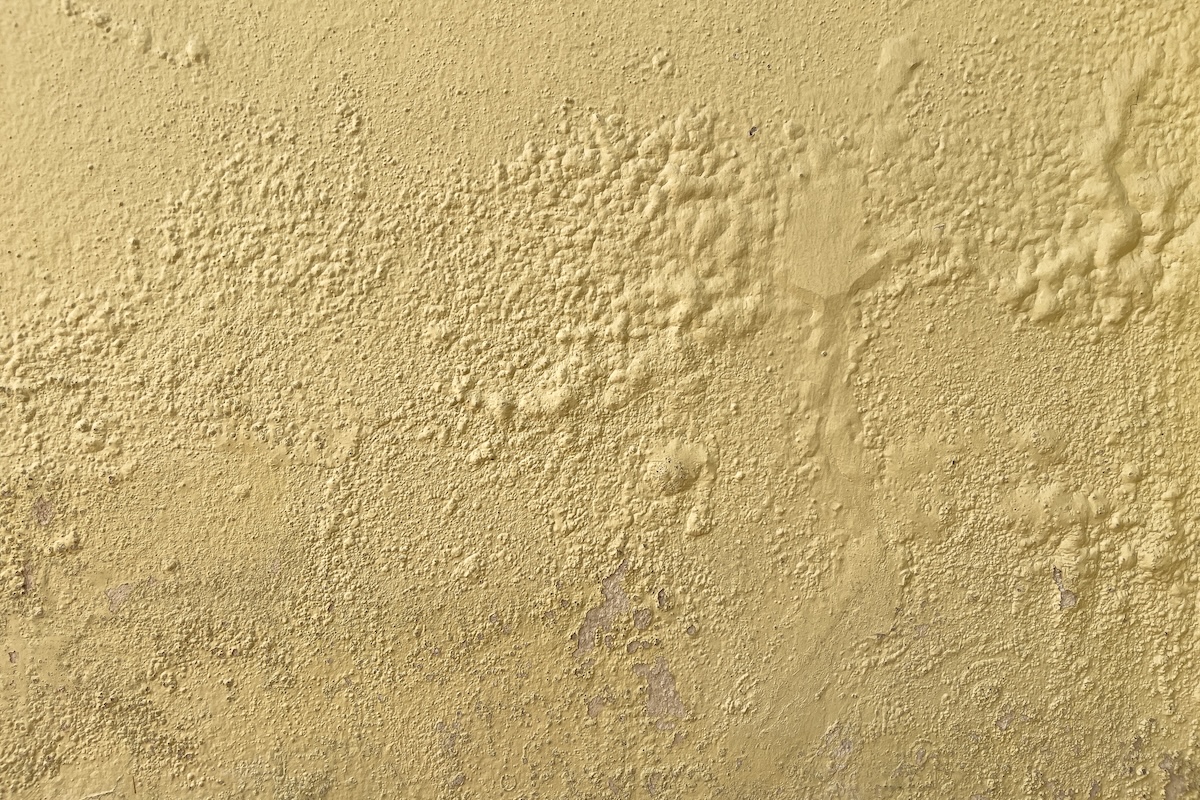
Why does paint bubble? There are a variety of potential causes. You can avoid painting problems like bubbling by understanding these causes, doing some minor prep work, and working with the right tools.
The painting surface was dirty.
According to Parr, “A frequent reason [for paint bubbling] is applying paint on a surface that hasn’t been adequately prepared, like one that is dirty, greasy, or has old peeling paint.” This is one reason it’s a good idea to clean walls before painting them. Dust, dirt, and grime inevitably collect on interior walls and ceilings over time, and fresh paint does not adhere easily to surfaces clogged with these loose particles.
As the new paint dries and, to some extent, shrinks, it will lift up from soiled areas of the surface and form unsightly bubbles around specks of grime. These are examples of bubbles confined to the topcoat; they won’t extend down to the substrate.
Solution: You can course-correct by treating bubbling patches rather than repainting the entire room. Carefully sand and patch problem spots. Then, to prevent paint from blistering in the future, thoroughly clean the surface with a sponge dampened with soapy water followed by a dry rag. Let the surface air-dry completely before applying primer and paint to the patched areas.
You skipped the primer.
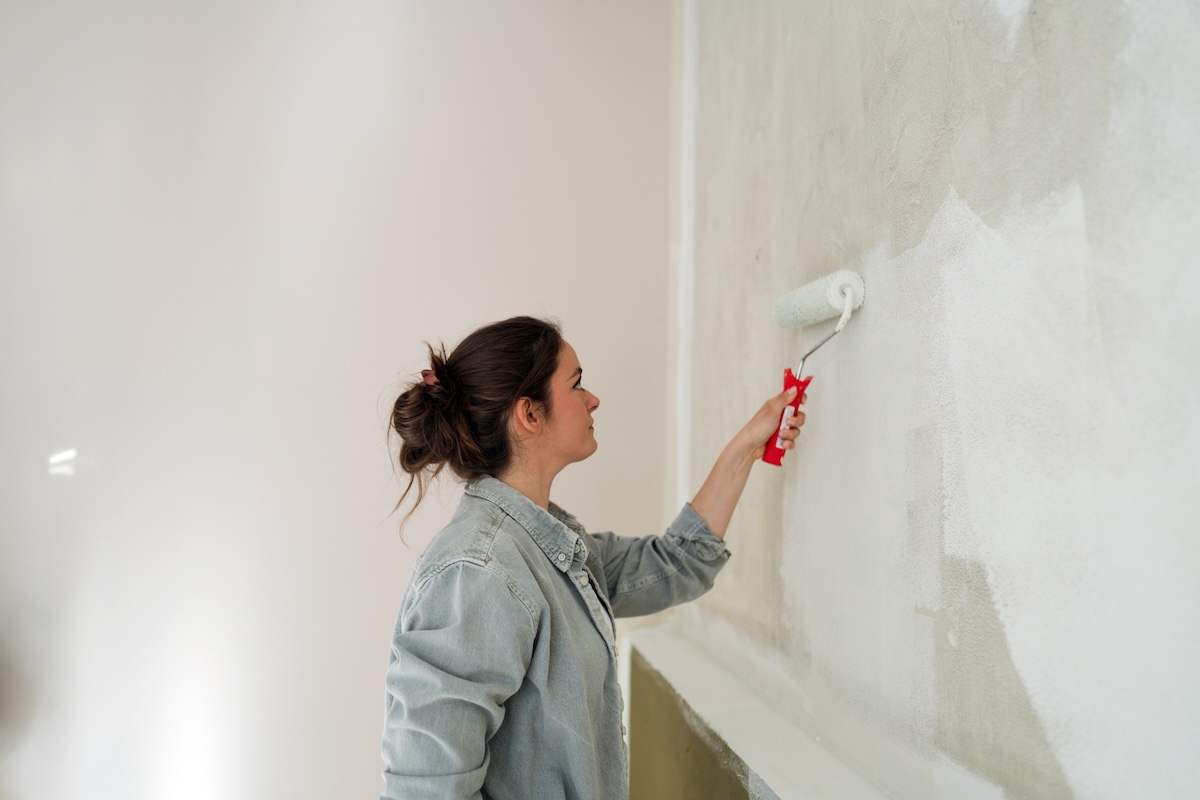
Porous substrates like bare drywall or plaster absorb more of both the pigments and resins (binders) found in the paint than substrates that have been sealed with primer. As a result, your base coat of paint will have a thinner binder film than necessary for the next paint coat to stick to. Where new paint doesn’t stick to the base coat, it tends to lift off and result in paint bubbling on wall surfaces.
Solution: If you notice paint bubbles after a primer-free paint application, remove them by scraping and patching the affected area, cleaning the surface of joint compound dust and other debris, then applying a stain-blocking primer to the surface before repainting it. Pick a primer based on the material of the surface being painted and coordinate it with the type of paint you plan to roll on afterward. (For our product recommendations, see our tested guide to the best paint primers.)
- Latex primer is water-based and is one of the most popular primer options for drywall. because it dries quickly and is less prone to cracks than other primers. Just keep in mind that oil-based paints don’t adhere well to latex, so you’ll want to choose a water-based paint to accompany this primer.
- Oil-based primer is best known for being stain- and moisture-resistant. This primer is also ideal for porous surfaces such as wood. Both water- and oil-based paints can be safely applied over an oil-based primer.
- Shellac primer has the quick-drying quality of latex primer and the stain-resistant quality of oil-based primer. It can also be used with both oil- and water-based paints. However, it isn’t as desirable for interiors due to its strong odor.
The primer will seal pores in the substrate, ultimately affording a thicker base coat with adequate binders that subsequent paint coats can stick to without bubbling. Just remember that the primer needs to dry fully before applying paint; otherwise, the solvent component of paint that is meant to evaporate while drying will instead become trapped beneath the top paint coat and lead to blistering.
The painting surface or surroundings were moist.
Excess moisture on your painted walls—whether from water droplets, high humidity, leaks, or plumbing problems—can cause water-filled bubbles in the paint, originating anywhere from the substrate level to between the top two coats. “Paint bubbling can also occur if the paint was applied too thickly or if it was not allowed to dry properly between coats,” Parr says.
Paint bubbling in bathrooms, kitchens, basements, or anywhere liquids or condensation are present on surfaces, is particularly common. In some cases, the bubbling paint might even signal a more concerning issue like water damage or mold.
Solution: It’s vital to identify and address the root cause of the moisture issue. Then you can proceed with repairing the paint bubbles.
- First, inspect and address the source of the moisture. Common culprits include roof leaks, basement flooding, bathroom humidity, loose plumbing connections beneath a sink, or leaky caulking.
- Once you’ve identified and remedied the problem, scrape, patch, clean, and dry the walls.
- Minimize the possibility of moisture affecting a finished paint job by checking that the room’s humidity levels are moderate—ideally from 40 to 80 percent, as measured by a hygrometer (which costs between $10 and $20).
- Finally, keep the fresh paint coat away from moisture until it dries fully; for example, avoid turning on the shower in a freshly painted bathroom until the coat has cured.
Here’s a tip: When choosing paint for a bathroom or kitchen, it may be worth opting for a moisture-resistant formula for the best protection.
The painting surface or surroundings were too hot.
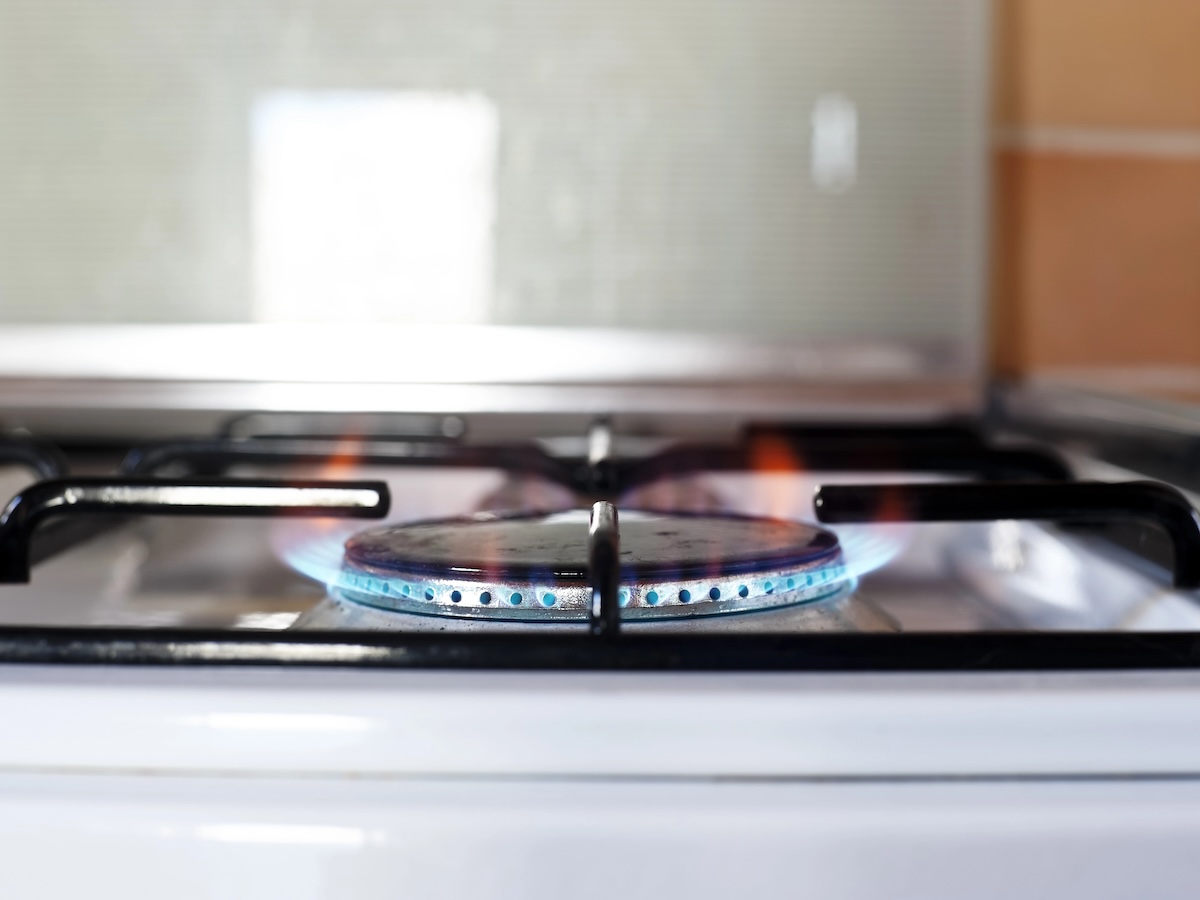
Extreme heat—common in kitchens, living rooms, and other spaces containing heat-generating appliances or lots of direct sunlight—soon after a fresh paint job can cause the topcoat to dry unevenly at a faster-than-average rate, leading to paint bubbling on walls just underneath the surface.
Solution: To repair heat-induced paint bubbling, remove the bubbles with a scraper, clean and prime the surface, then ensure the indoor temperature is between 50 and 85 degrees Fahrenheit before painting (check the manufacturer’s instructions on your paint packaging for the specific temperature recommendation).
During paint application and drying, rely on indoor lighting as a light source and aim to shut blinds and close doors that typically invite direct sunlight, since it can increase indoor temperature and the potential risk of paint blistering.
You used the wrong paint roller cover.
A roller cover’s type or and nap length vary to provide ideal paint coverage on a number of materials. A roller that’s ill suited for the texture of your surface is likely to cause uneven paint coverage and paint bubbles down the road. Parr advises that in most cases, “Using a high-quality roller cover with a fine nap is ideal for avoiding bubbles in your paint job, as it helps to apply the paint evenly and reduce the risk of introducing air pockets.”
- Short nap roller covers: This type of roller cover is ideal for painting a smooth or semi-smooth surface like untextured drywall or plaster that you might find in the kitchen (3/16- to ¼-inch nap for smooth or ⅜- to ½-inch nap for semi-smooth). This applicator will create minimal gaps with each stroke to aid in optimal paint adhesion.
- Medium nap roller covers: At ¾ to 1 inch nap, these covers are recommended for painting stucco and other moderately rough surfaces.
- Long nap roller covers: Extremely rough surfaces like textured drywall will need a 1¼- to 1½-inch roller cover for sufficient coverage.
Solution: To repair bubbling paint caused by the use of an improper roller cover, eliminate the paint bubbles by scraping and patching them. Then clean, dry, prime, and paint the surface—this time with the correct tools for the job.
Tips for Fixing Paint Bubbles
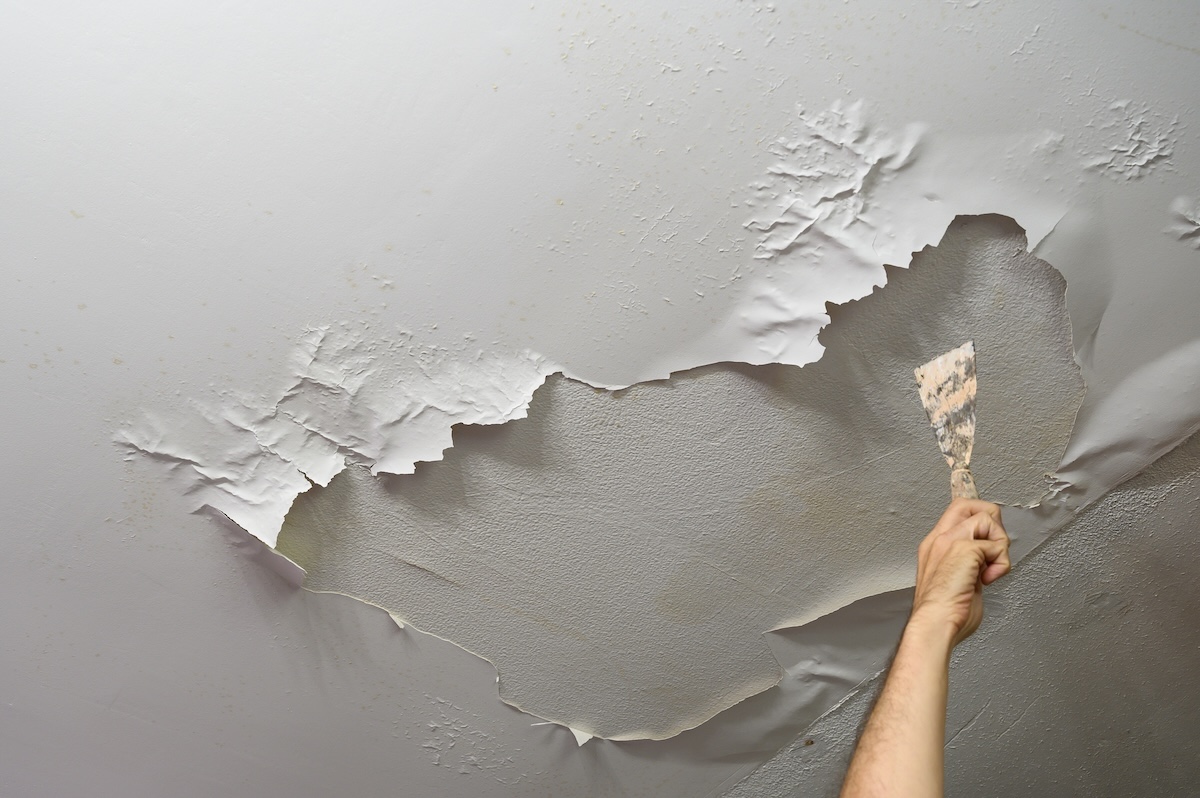
In most cases, a simple scrape-and-patch technique is the simplest way to fix a botched paint job that has resulted in paint bubbling on walls. Here’s how to get rid of air bubbles on painted walls with the best results.
- Enlist a putty knife to file away the bumps using a gentle vertical or horizontal scraping motion.
- After patching, lightly sand the dried compound until smooth with a fine-grit sandpaper.
- If possible, avoid painting on especially hot or humid days as moisture in the air can become trapped underneath the paint, leading to paint blistering on the wall.
- Stir paint slowly. Use a wooden stirrer or a paint-mixing power drill attachment to stir paint as slowly and for as short a duration as possible.
- If you see bubbles on the wall when painting with a roller, slow down your stroke speed.
- Brushing on paint too quickly can also result in air pockets that lead to paint bubbles down the road.
- Avoid applying oil-based paint directly over latex paint. The oil and water bases won’t bind, and the resulting lack of adhesion between the coats can cause blistering in the oil-based coat.
- “For a perfect outcome,” says Parr, “opt for top-notch paint and tools, and adhere to the manufacturer’s guidelines for application and drying durations.”
Whether you’re painting a room for the first time or redoing a botched job, these steps will help you avoid unsightly paint bubbling and save you the trouble of more time-consuming repairs.

